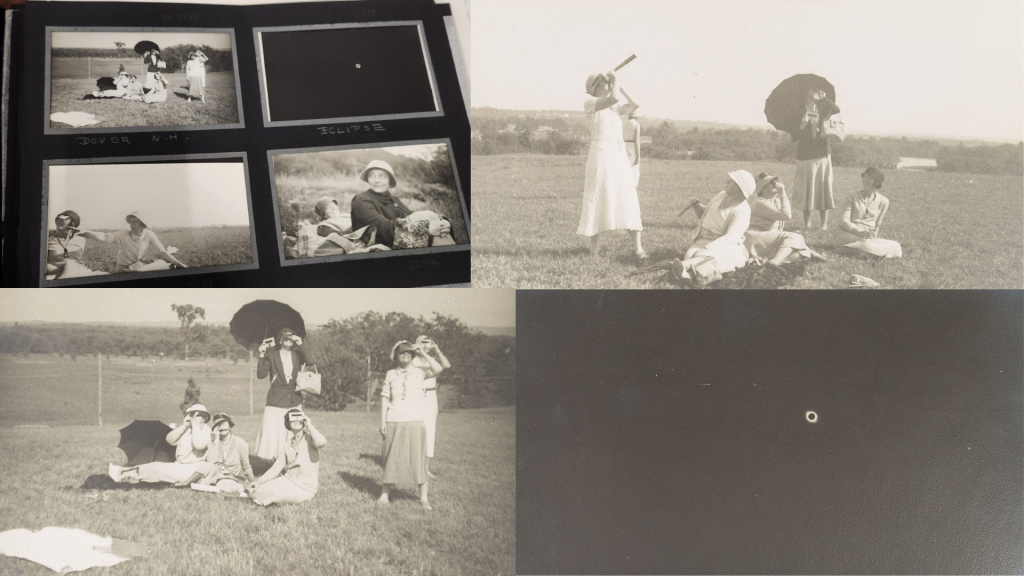by Heather Rockwood, Communications Manager
A recent researcher at the MHS told staff about an interesting page in one of Amelia Peabody’s (1890‒1984) volumes of photographs (yet to be digitized). The photos related to our excitement over the eclipse on 8 April 2024. Peabody’s images captured a viewing party for an eclipse on 8 June 1918, from Dover, New Hampshire. The pictures show several seated or standing white women holding viewers over their eyes. I was enchanted to see this scene from 106 years ago, and how it was much like our own viewing parties this early spring. I felt inspired to look up Amelia Peabody and discovered a fascinating person from Massachusetts history.

Amelia Peabody was born to Frank Everett Peabody and Gertrude Bancroft Peabody (née Bayley) in 1890 and lived to be 93 years old. Her father was a partner at the brokerage firm Kidder, Peabody & Co. Her mother descended from Robert Gray, the American captain lauded as the first seaman to circumnavigate the globe and open trade with China. The family resided in a townhouse in Boston’s Back Bay and owned oceanfront property in Gloucester.
After her debut in 1909, Amelia studied sculpture at the School of the Museum of Fine Arts under Charles Grafly and became an accomplished sculptress. Her artworks have been displayed worldwide, from Paris to New York. Some of her work lives on in Massachusetts, notably at Mugar Hall, the Bouvé College of Health Sciences at Northeastern University.
Her father, Frank, died in 1918 after a brief illness. Her mother, Gertrude, then married a family friend, William Eaton. Because her older brother Everett Peabody died aged 15 in 1900, Amelia was the sole heir to her father’s fortune. She maintained her family home at 120 Commonwealth Avenue in Boston, as well as Mill Farm, her residence in Dover, and Powisset Farm, also in Dover, with several other landholdings in that town.
As well as being an artist, Amelia was also a horsewoman, farmer, breeder, and philanthropist. Amelia had a wide range of interests and charitable causes, which included animal husbandry, the arts, veterans affairs, medicine, music, and scientific discovery. At her farms in Dover, she raised registered Hereford cattle, Yorkshire pigs, sheep, and thoroughbred horses. For many years, she was the chairman of the Arts and Skills Service of the American Red Cross, which promoted art therapy for wounded servicemen during World War II and continued to promote art therapy for hospital patients after the war. She sat on the boards of various esteemed medical institutions in Boston. In her golden years, she volunteered at the front desk of the Massachusetts General Hospital. She supported a variety of engineering projects, including a solar home built on her Dover property and spearheaded by scientist and Hungarian immigrant Maria Telkes. She was a staunch advocate for education and scientific exploration and formed a strong relationship with the Museum of Science.
In 1942, Amelia put part of her fortune into what would become the Amelia Peabody Foundation upon her death. She died of natural causes in 1984, leaving the bulk of her vast estate to charity.
See Amelia Peabody’s photographs collection guide and papers collection guide online.

